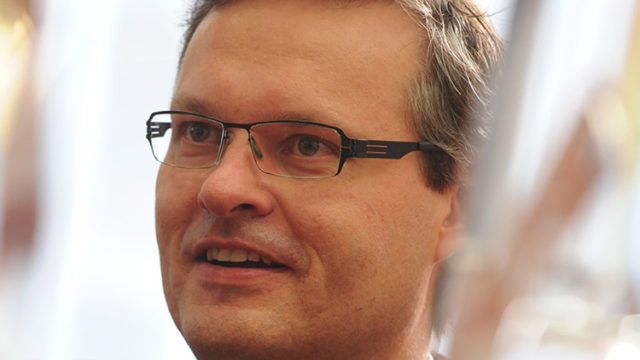Thorsten Becker, JO Hambro
One argument against US stocks is an expected drop in corporate earnings. Becker, co-manager of the JOHCM US Small Mid Cap Equity Fund, admits earnings will slow in the second quarter versus 2018 as the tax cuts fade.
“But the underlying strength of the economy is still there. For business, a lot of red tape has been reduced, so they are more willing to invest. We should see a good investment climate this year.”
Smaller companies, he believes, will be the biggest beneficiaries. The reduction of bureaucracy benefits small companies much more than large caps, he said. Moreover, US small caps have mainly domestic revenues, so they are less impacted by the US-China trade conflict.
In terms of valuations, Becker believes “the excess people see in the US is related to large caps”.
The biggest US market risk emerges from what he sees as US economic strength.
“Everyone is talking about the Fed on hold, but wages and inflation point up, the economy is strong with fiscal stimulus on top of it.”
Becker expects two-to-three rate hikes this year, while many market participants expect one.
“As soon as inflation gets out of bounds, the Fed will step in and surprise the market. The S&P will fall.
“I don’t think the next comments from the Fed will be very dovish.”
Concentrated portfolio
Becker’s fund invests in companies with $1bn-$10bn in market cap that have huge potential upside — if they continue to grow.
The fund has three managers, each with sector expertise. The three – Becker, Arun Daniel and Vince Rivers – have worked together for 10 years and all were previously at Fidelity.
The portfolio is concentrated with around 50 positions. He estimates the average holding period is two years, but some companies have been held for five years.
The managers look for “large caps of the future” using a bottom-up approach, assessing balance sheet fundamentals and talking to management, Becker said.
The team meet weekly to go through new ideas, discuss what they are working on, and look at risk factors, he added.
New positions get a 1%-5% allocation, but the current top ten holdings are about 3% or less of the portfolio. Software company Rapid7, security products maker Allegion and Burlington Stores are the largest three positions, all around 3%, FE data shows.
Smaller companies tend to react strongly to negative events such as a missed earnings report. But Becker believes the fund is positioned to do well versus the sector and benchmark Russell 2500 in either an up or down market because “a handful of names are not driving the portfolio”.
An example of a stock peer funds hold that Becker’s fund would not is Tesla. “It’s a great concept, the cars are fantastic, but look at the numbers and it’s hard to make a case for an investment. “We look at the numbers for an economic rationale [to invest].”
The fund’s volatility, annualised over three years (15.91), is higher than the benchmark (14.62) and sector average (14.55), according to FE data. He attributes it to chronic underweights in the low volatility sectors of real estate and utilities.
Risk and sell signals
Becker said as a stock approaches target price, the position is reduced and sold at the target. Other sell signals are a thesis change, when a company deviates from the original plan that was the reason for buying, or simply finding a better opportunity.
The portfolio is 80% driven by individual stock specifics and the remaining 20% are likely to carry risks linked to interest rates, GDP, bankruptcy or macro factors.
“In this 20%, we add as many different companies as possible. So if an individual company has poor results, it won’t impact rest of portfolio. It takes very little for a company to disappoint, especially with small caps you get big movements.”
He sees the three co-managers as differentiation from peer funds. “We are sector experts and you need to know the underlying industry and business, rather than just numbers. Sector expertise gives you more staying power when things go poorly.
“If you’re only looking at growth or value, there will be long periods in the market where that goes against you. We’re more of an all-weather type of fund.”
The fund vs benchmark index and sector


















